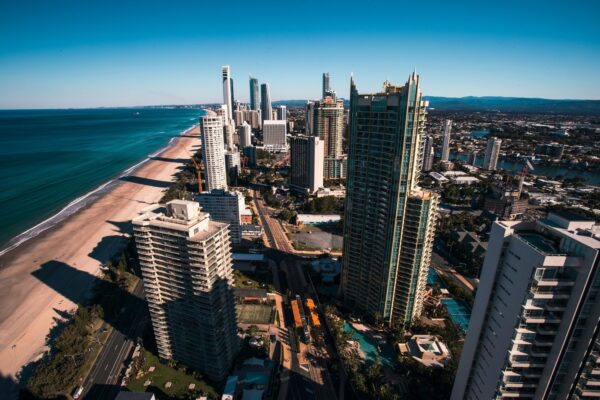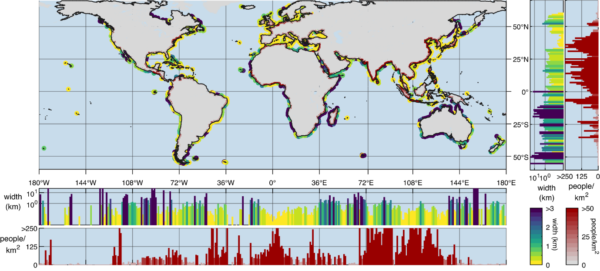Beaches and dunes are becoming increasingly trapped between rising sea levels and our towns and cities.
Researchers writing in the journal Nature found that when dropped on a random beach anywhere in the world, you only need to walk 390 metres on average to find the nearest road or building. And while that short walking distance may seem convenient if you want a day at the beach, it’s bad news for our protection against rising sea levels, drinking water supplies and biodiversity. But there is hope; the researchers found that by designating nature reserves, beaches and dunes can be successfully protected.
Coastal ecosystems provide vital services, but human disturbance causes massive losses. Remaining ecosystems are squeezed between rising seas and human infrastructure development.
Researchers analysed 235,469 transects worldwide to show that 33% of sandy shores harbour less than 100 m of infrastructure-free space, and that 23–30% of this space may be lost by 2100 due to rising sea levels.
Photo: Matt Barrett
The value of wide beaches and dunes
Beaches and dunes are vital to society. They protect us from flooding, are an important source for our drinking water, and are an important habitat for numerous plant and animal species. When beaches and dunes are given enough space, they can fulfil all these functions. However, if dune areas become too narrow, natural flood protection, drinking water extraction and biodiversity are threatened.
Coastal squeeze
“Infrastructure restricts the available space to accommodate coastal ecosystems and impedes cross-ecosystem processes through landscape fragmentation. The space reduction hampers sandy coasts and their habitats to adapt to sea level rise by landward retreat, a phenomenon called ‘coastal squeeze,” the researchers wrote.
The researchers mapped this coastal squeeze by combining previously recorded measurement data with Open Street Map data. They then measured the straight-line distance from the coastline to the nearest paved road or building and took this measurement for every kilometre along all the sandy beaches around the world.
Infrastructure-free width is depicted in yellow-green-blue from 0 to 3 km. Coastal population density is depicted in white-red from 0 to 50 people/km2. Bar graphs show the latitudinal and longitudinal average.
Protected status
The researchers found that when dune areas are given protected status, buildings and roads are four times more distant than in unprotected areas. Only 16% of the world’s sandy coasts are currently protected, which then indicates the importance of better-protecting beaches and dunes around the world.
The full research published in Nature can be read here.

